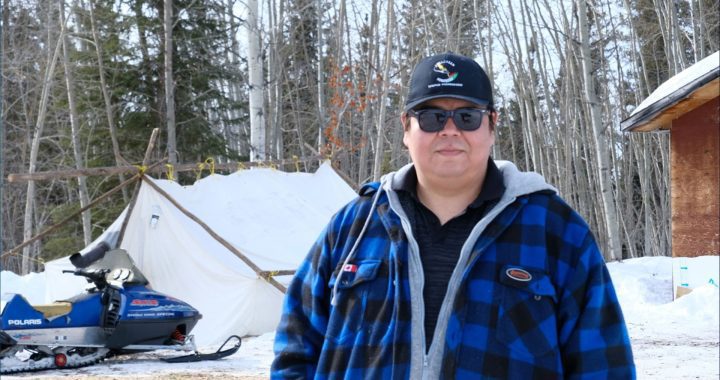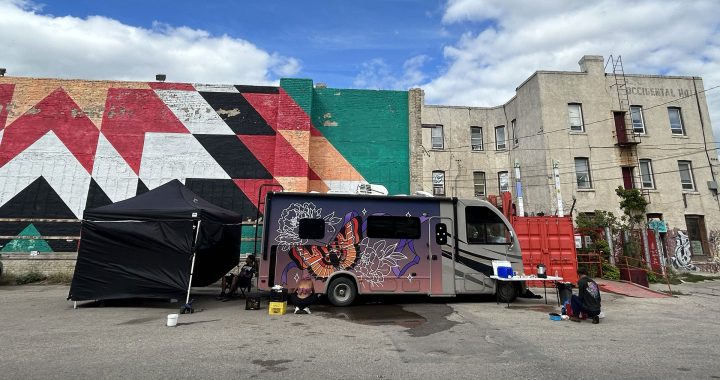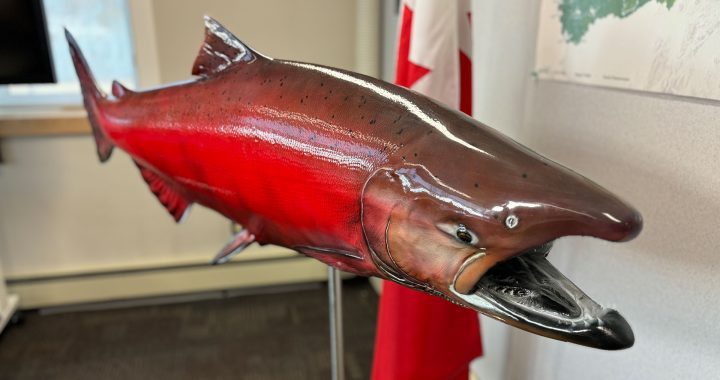(Health centre in Attawapiskat where mental health services are “at best probably minimal and at worst non-esistent.” Photo: APTN)
The Canadian Press
Indigenous leaders say rampant child sexual abuse on many reserves across the country is an underlying contributor to mental health crises _ particularly among young people _ but a lack of funding and co-ordinated programs is leaving residents without desperately needed counselling services, which could help break the chain of despair and hopelessness enveloping entire communities.
In Ontario, for instance, mental health services on reserves are “at best probably minimal and at worst non-existent,” said Sol Mamakwa, health adviser for Nishnawbe Aski Nation, an organization representing 49 Aboriginal communities within a vast area of the province’s north.
“Even within the NAN territory, with the different regions, the different health authorities, there is no mental health or addiction strategy that exists in the communities,” said Mamakwa, describing the hodgepodge of services that do exist as reactive rather than preventive.
“We are basically going from crisis to crisis to crisis. And sometimes I refer to it as a perpetual crisis.”
A case in point is Attawapiskat First Nations on James Bay in Ontario, where in early April a state of emergency was declared after 11 young people attempted suicide in little over a week. That followed 28 others the previous month, capping a seven-month period during which almost 100 youth tried to end their lives, an epidemic initially sparked by the self-inflicted death of a 13-year-old girl.
The Ontario government sent in an emergency response team made up of nurses, psychosocial workers and other staff to help deal with the crisis. After their departure in early June, Health Services North _ the hospital in Sudbury, Ont. _ provided additional nurse and crisis worker positions to bolster existing resources. But because there is no permanent housing, different workers rotate into the reserve every six days.
Although any extra mental health workers are a welcome boon for remote communities like Attawapiskat, shifting short-term personnel and high staff turnover often make it impossible to build a therapeutic relationship with a resident suffering from depression, substance abuse or sexual trauma, which mental health experts say can take a long time to even begin to resolve.
Dr. Michael Kirlew, a family physician in Sioux Lookout, Ont., who flies to Wapekeka First Nation for a few days each month, said although a trained mental health counsellor may travel to a particular community and see patients at the local nursing station for a few days, that worker may not return for another month or two.
“So suppose somebody goes into crisis in between? Are (community health) nurses going to have the necessary skill sets in mental health to deal with certain things?” he said, adding that access to psychological interventions is often forthcoming only in response to a crisis, such as an attempted suicide.
“So if the child’s found hanging from a tree, they can access a service,” he said. “But if a child came two days before and said ‘I’m thinking about doing something, can I access some mental health counselling?’ … there is no formal provision that allows for that to happen.”
Indigenous leaders say the dearth of mental health services has harmed many reserves, among them Saskatchewan’s Lac La Ronge and surrounding communities, where six girls last month chose the oblivion of death over a life apparently marked by despair and hopeless resignation. The youngest was just 10 years old.
It’s not known what was specifically behind these suicides and hundreds of other attempts among young people over the last year.
But among the explanations extended _ poverty, overcrowded housing, dismal job prospects, widespread alcohol and drug abuse, and family violence _ another potential reason simmers silently below the surface of everyday life on many reserves: child sexual abuse.
“I think in our communities, sexual abuse is extremely prevalent, whether children are abused by people that they know or by people they’ve come in contact with in positions of power,” said Dr. Alika Lafontaine of the Indigenous Physicians Association of Canada.
“Our communities have been exposed to sexual abuse at a rate that almost approaches 100 per cent in certain areas, said Lafontaine. ”So I think that definitely plays a part in it.“
A months-long investigation by The Canadian Press found child sexual abuse is an open secret within many Aboriginal communities across the country, a legacy connected to generations of Indigenous children being sent to government-mandated, church-run residential schools, where many were physically and sexually molested by clergy and other staff.
Many of the abused became abusers themselves, imitating what had become normalized behaviour within the schools and bringing it home to their families, perpetuating a cycle of incest that now reverberates through the generations.
Mamakwa of NAN calls child sexual abuse “the big elephant in the room” that most people are loathe to speak about because of the stigma and shame that surrounds the issue.
“Some of the communities I work with, I know there’s stuff happening there, and people want to sometimes not deal with it,” he said. “They want to just sweep it under the rug.”
That conspiracy of silence can complicate access to any therapeutic options that do exist, especially in remote, close-knit communities, said Renee Linklater, manager of Aboriginal community engagement at the Centre for Addiction and Mental Health in Toronto.
“People are worried about that because they’re worried about confidentiality,” said Linklater. “If they go to the health office, it might be their aunt or their uncle who’s the family wellness worker.”
And when it comes to the highly taboo topic of sexual abuse, victims often stay quiet about their molesters for fear of retribution, said Linklater, an Anishinaabe from southwestern Ontario’s Six Nations of the Grand River.
“We haven’t really come to that time where it’s OK to openly challenge. Someone discloses abuse within a family and they might be railroaded out of their family circle for bringing up something like that _ and even out of their community.”
Federal NDP MP Charlie Angus, whose northern Ontario riding includes a number of remote reserves, said one of the difficulties in dealing with child sexual abuse and its possible connection to the mental health crisis is a lack of tools for frontline workers.
“In the northern regions that I represent, we don’t have proper police services in many of the communities, so how are the police going to be able to investigate these issues?
“So if a child is being abused, who do they go to? We have such spotty counselling services, so if this is happening, the young people are carrying this trauma themselves.”
Lafontaine said solving the Indigenous mental health crisis, including breaking the cycle of intergenerational sexual abuse, isn’t just about governments pouring in more money _ although certainly more resources are required.
Reserves also need help creating a planning mechanism they can plug into to start addressing the myriad problems many are facing, he said, from inadequate housing and a lack of clean drinking water to alcohol and drug addiction and sexual abuse of children.
Having such a strategy would allow communities to get out of crisis mode and the paralysis of action it creates, Lafontaine said.
“When you’re in the midst of a crisis, there’s no way for you to plan for a future.”









